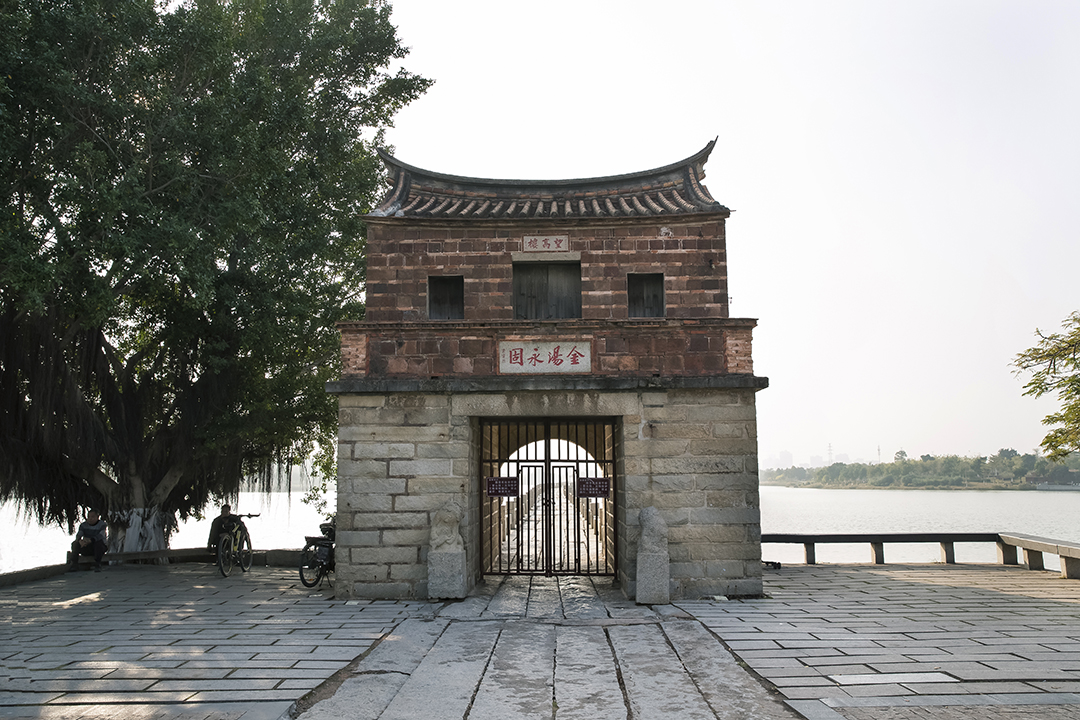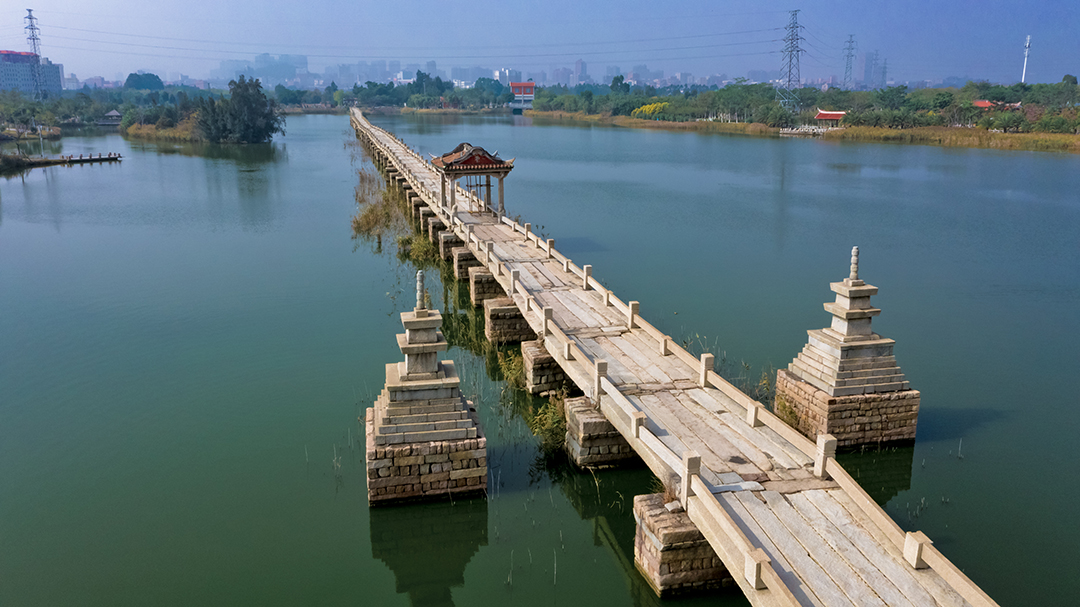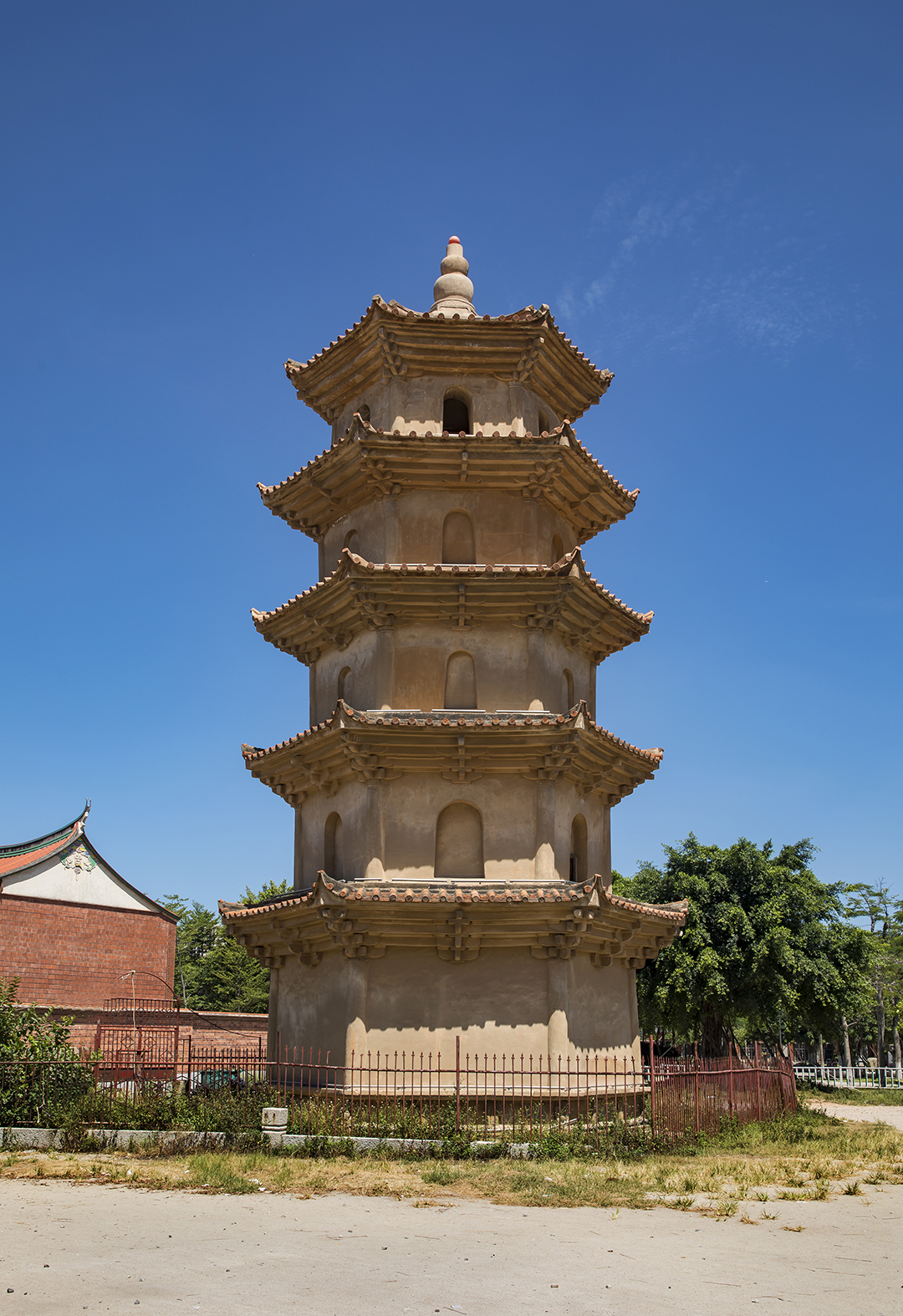
Anping Bridge is a representative component reflecting the Transportation Network of Quanzhou as an emporium of world maritime trade. Anping Bridge is located 30 kilometers southwest of Quanzhou city in a bay at the juncture between Anhai in Jinjiang and Shuitou in Nan’an. The bridge was the main link between Quanzhou and Zhangzhou and Guangzhou to the south. It is also known as Five Li Bridge due to its length, which is around five li (one li measures around 500 meters) and is China’s longest existing cross-sea stone beam bridge. Construction on the bridge began in 1128 and was completed in 1152; it was a collaborative effort between monks, merchants, government officials and locals. The bridge runs roughly 2,255 meters from east to west and is between 2.9 and 4 meters wide. It is laid with long stone beams and granite guardrails run along each side. All together there are 360 stone step piers in rectangular, pointed boat-shaped and bicuspid boat-shaped styles. Lying across the piers are the huge stone beams, 5-11 meters long, that make up the bridge’s deck.
The construction of Anping Bridge drew on the methods applied in building Luoyang Bridge, but with some added innovations. A number of ancillary buildings were constructed on Anping Bridge and in the surrounding area. At the eastern end of the bridge is a hexagonal five-story brick Ruiguang Pagoda featuring the style of wood pavilion pagoda. Construction on the pagoda started in 1152, and its purpose was to guard the ancient bridge and provide divine protection for traveling merchants. The Bridge Tower Pavilion (Qiaotou Pavilion) at the eastern end of the bridge, Water Heart Pavilion (Shui Xin Pavilion) in the middle of the bridge, and the Tidal Shrine (Haichao Temple) at the western end of the bridge are all buildings relating to the local folk religion. In the middle section of the bridge, four small square stone pagodas were also built. In the surrounding area of Water Heart Pavilion, 16 stele inscriptions recording repairs made to the bridge in the dynastic eras have been preserved. Beside the pavilion’s front columns, two statues of generals protecting the bridge stones still stand; these are works of Song Dynasty stone sculpture. On the western and eastern sides of the bridge, two bridge gateway house were built, the “High Vantage Building” (Wanggoa Pavilion) and the “Tide Listening Building” (Tingchao Pavilion). Two pavilions were constructed in the middle section of the bridge to provide people crossing the bridge with shelter from the rain and somewhere to rest.




 闽公安备35050302000734
闽公安备35050302000734
